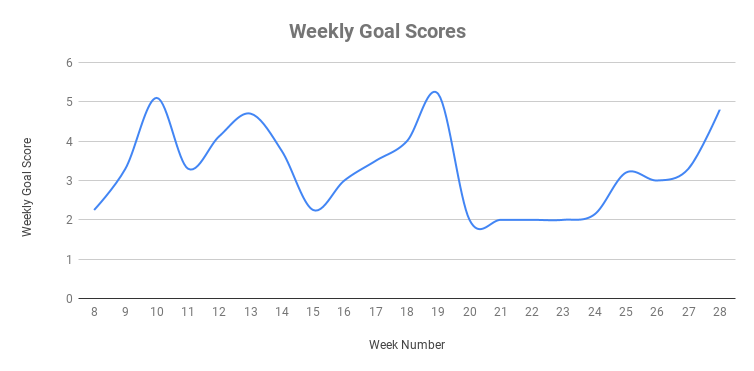I leverage science, goals and goal-setting in a number a ways. But recently, I started something new. I started “scoring” them. This has proven a good way to periodically check my efforts over time and my organization in reaching the things that matter.
When it comes to goals, one way I use them is to prioritize what’s important.I use goals as multi-step pursuits. I’m also a believer in the science of goal-setting to improve my chances of reaching epic objectives. I use goal planning as a method to balance out a number of competing interests and objectives over time. For longer-term stuff, I even built a DIY goal tracker to help set, schedule, and align tasks and projects (aka sub-goals) towards reaching my yearly and lifetime “missions.”
Unfortunately one of the challenges with goals is how to quantify them. Over the past several months, I started to keep score on goals on my weekly goals. When combined with constructive goal setting, I’ve found it to be a good way to ensure I’m goal-aligned in my doings.
The basic idea is simple: Each week (or month or even day, if that’s your thing) write down a list of your goals. Then at the end of that period during your weekly review, mark how how many were completed and then calculate a score based on goals completed and those left undone.
The exact scoring isn’t all that important. Just strive to be consistent. You could simply divide total completed over total set, and you’ll get a completion percentage. The higher percentage could be used to quantify a better week in pursuit of goal completion.
For reference, here is how I score mine: Each week I set one or two priority goals, which I call “Weekly Things,” and also list another 4-8 smaller goals, which I call “Support Objectives.” I allot 3 possible points to the weekly things. So if I get 1 out 2 done, then I get 1.5 points. If I get 2 out of 2, then it’s three points. For the support objectives, I also allot 3 points and simply divide total completed over total tried and multiple by 3.
The end result is my weekly score goal, which in my case has ranged from a low 2 to a high 4 with the occasional 5. Obviously it’s technically possible to get 6 points, but that’s not my intention here. If I’m scoring that high, it likely because I didn’t set ambitious enough goals. In general, I aim for anything over 4.
Obviously, this method requires you to consistently set and manage your goals, which, to be honest, if you aren’t doing that, start with that. For example, do a weekly review. I’ve written two guides to help get you started: Power of Weekly Reviews and Data-Driven Reviews.
Beyond a basic goal list and some form of scoring, there are a few other things to consider. Personally, I find it good to have a balance of different types of goals, meaning work, health/fitness, learning, personal and creativity goals. Aim to prioritize your list. If you are just getting started, start with a few items and build momentum. I find it effective to combine goal setting with a bit of task setting in my task tracker. That way I’ve blocked out specific tasks and time slots in my calendar for my goals.
Here’s a chart of my latest numbers:

Unfortunately, as you can see, I haven’t been as successful in completing my goals in late May and into June (Weeks 20 to 24), but recently I’m steadily getting back on track!
Best of luck with your goals and happy tracking!

